Wellington illustrator and toymaker Minu Freitag works with a wide variety of materials and techniques to form her whimsical creations. Her engaging, anthropomorphic characters and scenes are based on traditional archetypes: the unwilling (grumpy) and lonely hero, the companion on a journey, and the dangers and shadows of the past, present, and future. Yet, even though her characters are often dark and melancholic, they emit something strangely positive and uplifting. They shift their shapes, wear various skins, or live in symbioses with other beings and are often are caught between stagnation and change.

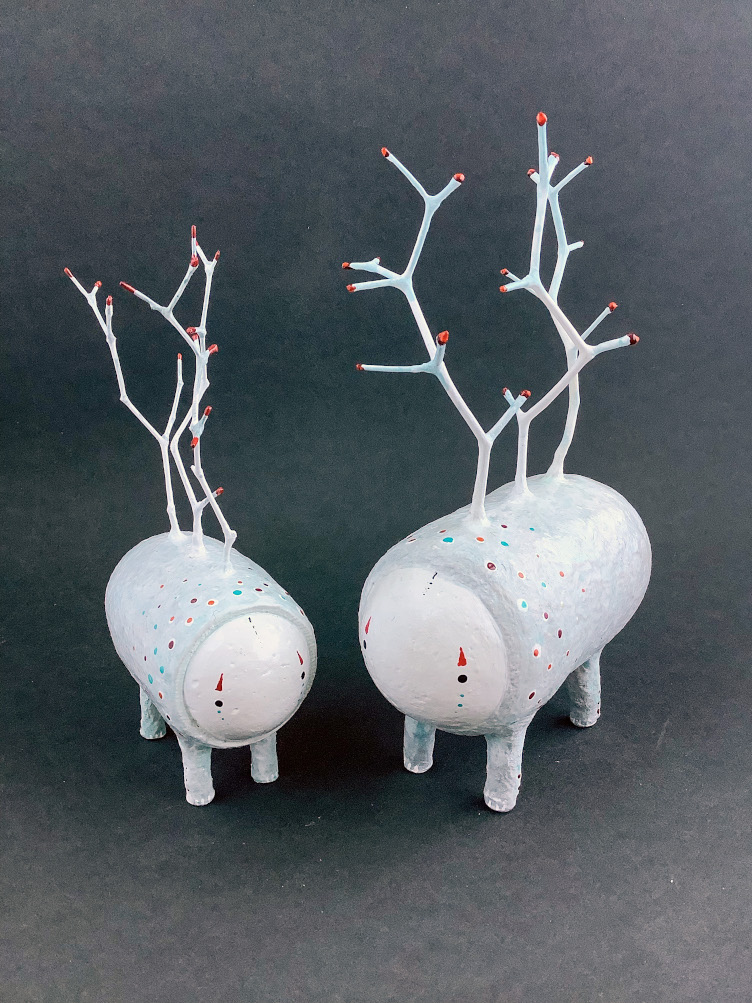
What do you make?
I design and create art toys and soft sculptures and recently added paper mache to my materials. I also paint and handprint my illustrations using traditional printmaking techniques.
How did you get into the craft?
As a child, I built sandcastles, assembled ships from sticks, and invented stories for my stuffed animals – I just never grew up. Having said this, I got slightly distracted for 20 years studying architecture which led around many corners to the world of commercial graphic design. I founded and ran a small web agency in Munich and continued working as a digital and online producer after moving to New Zealand in 2006. Somehow, I managed to hold on to a smouldering ember of creative energy. I became a night owl. I developed a soft toy series and experimented with screen printing and traditional printmaking like etching, woodcut, and drypoint. Recently, I have been focusing on sculptures using paper mache.
Do you have any formal training?
Yes and no. I studied architecture and digital media production in Germany. Both influence my art, but the primary drivers for my day to day practice are boundless imagination and sheer resilience. After working in digital design and media for over twenty years, I enjoy creating tangible things with my hands.
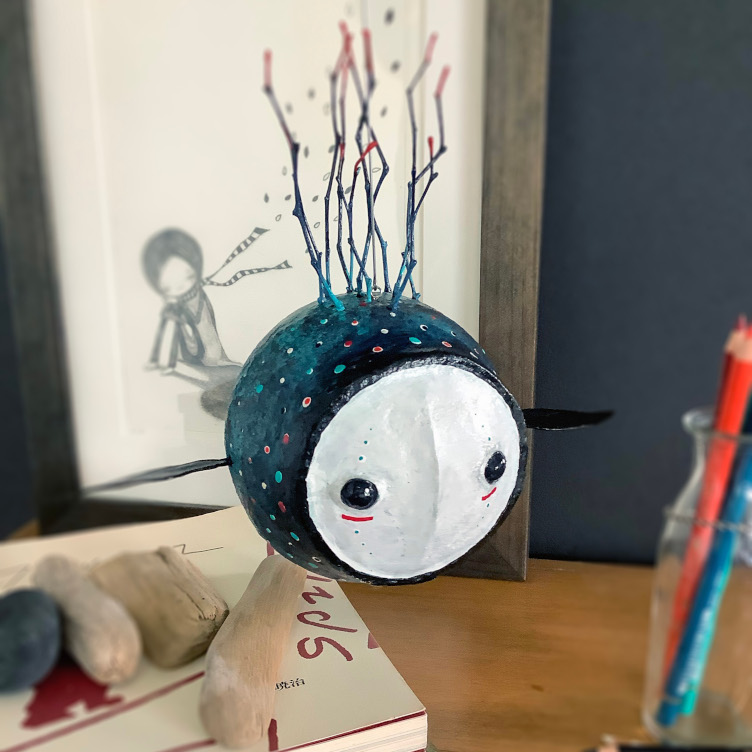
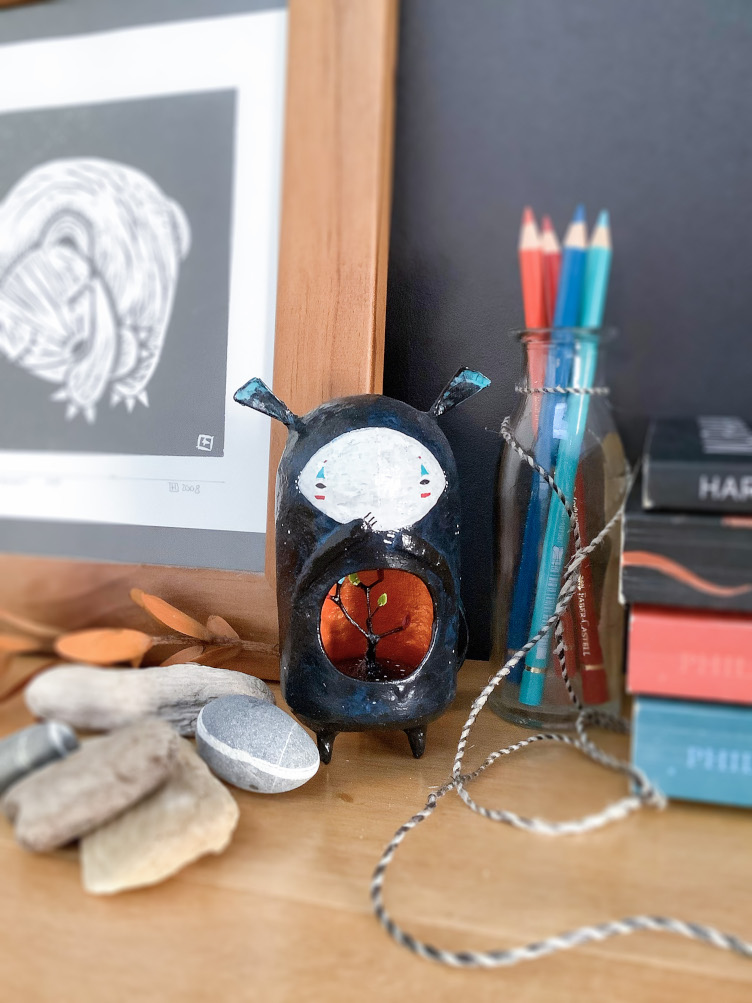
What are your favourite tools, materials and processes?
When it comes to tools and materials, I enjoy putting a contemporary twist on traditional processes. A good example is drypoint printmaking. The technique goes back to the 15th-century, but the materials have changed. Today, artists use anything from plastic to recycled tetra pack as printing plates.
When it comes to process, I believe that daydreaming is a lost art and an antidote to our constant need to be plugged in and entertained or productive. I start with rough pencil sketches and work with simple prototypes early on in the process. Working with materials leads to new ideas and new things to try out. Failures are a part of the process; nobody likes to see a great idea fail, but each failed and abandoned creature or project is critical in creating the final artwork.
Having said this, I also use a productivity framework I developed for my media clients. It keeps me on track and reminds me of my goals. Otherwise, I would never complete a single artwork or project.

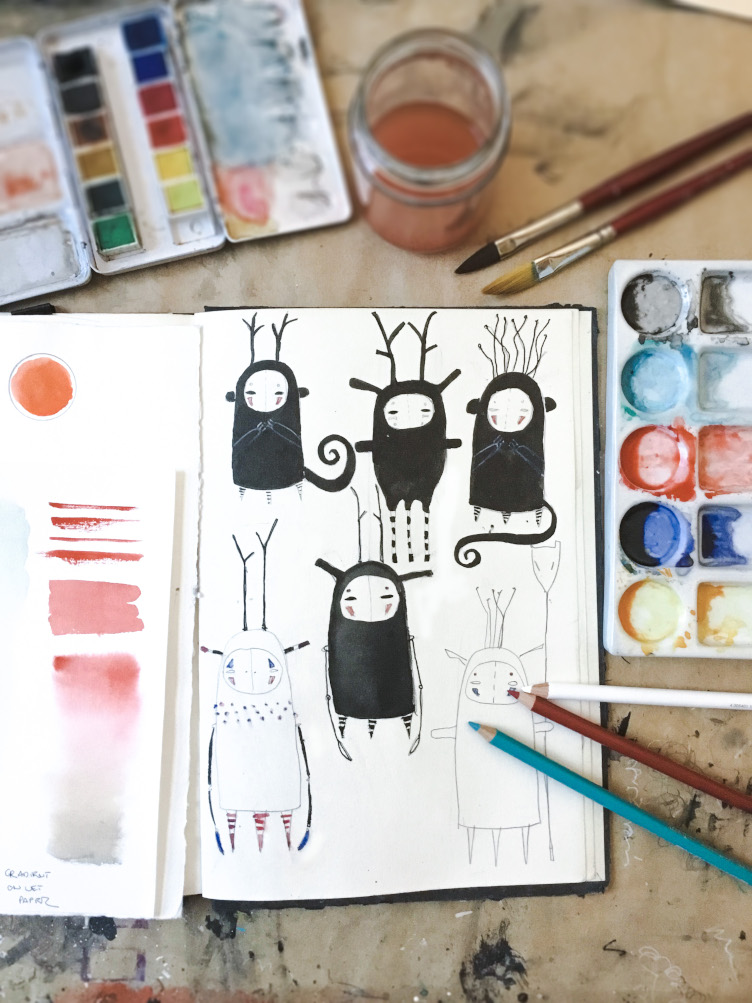
What techniques are used to create your paper mache sculptures?
I work with both traditional paper mache and paper clay. I developed three different paper clay recipes made from recycled paper – brown paper bags, newsprint, and egg cartons. The material is shredded, soaked, and mixed with starch, chalk, and sawdust. As binding, I add cellulose and linseed oil. Glycerin can help to keep the pulp moist and easy to shape. I use both positive and negative moulds for the basic shape and armature; sometimes, an old lightbulb is all you need. The limbs are added using wires or reused nails and screws. I add details using pages from a battered volume of east European tales. The resulting figurine is sealed with either black or white gesso and painted with fluid acrylics using a glazing medium. Up to twenty layers in different colours and opacities create an almost ceramic-like glazing effect. The last details are applied using a traditional ink dip.
Working with paper mache requires long drying times, and I work on several sets of creatures in different stages simultaneously, so my desk is usually a chaos zone.
What inspires you?
The stories behind the things you see and the ones you dream about. Imagine: you sit in a park, and you notice a girl knitting on a bench. You start thinking about who she is, where she is coming from – and doesn’t that ball of wool look like an octopus? And you have a motive for your next illustration or soft toy.
I also draw inspiration from fellow artists and creatives. Whenever I feel a strong connection to an artwork, I ask myself what exactly draws that emotional response and how I can use that energy to improve my own work. What I am looking for is not to copy but to find my own authentic story and style within the same unvoiced language.

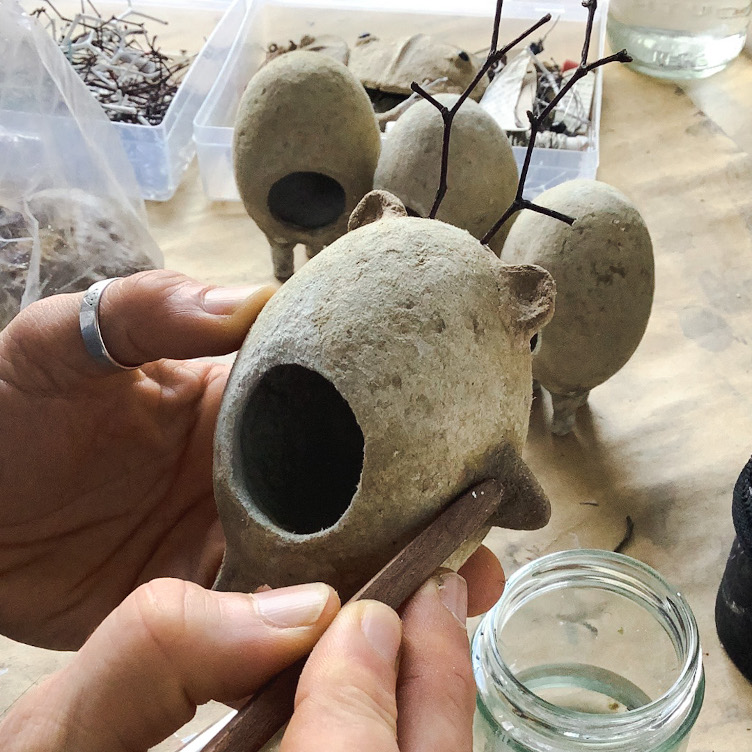
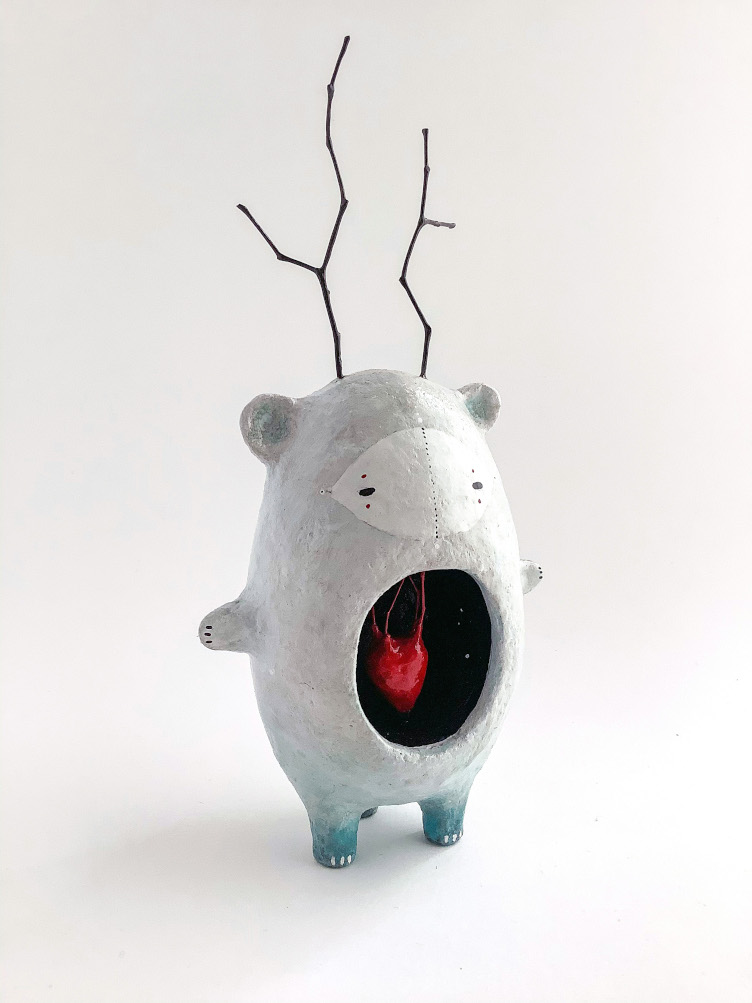
Is there a philosophy behind your work?
I enjoy beautiful, simple things with a touch of the uncanny and weird, and aim to add something special to my customer’s home or workplace, to put a smile on their face, and to entice daydreams of another place and time.
Keeping my art practice as sustainable and ecological as possible and working with recycled or locally sourced materials is essential to me. Most of my canvases are reclaimed wood; my paper mache creatures are made from paper bags and packaging, and I am working on a series of plush creatures made from local wool felt and recycled fabrics.
What has been your favourite feedback or a highlight of your maker journey so far?
To have created a much-loved companion for little people. I have never found a way to produce my soft toy series sustainably without compromising on quality or the handmade factor. However, I still get emails from desperate parents telling me that their children lost one of my toys and are heartbroken or have difficulties falling asleep. I always move heaven and earth to make sure I can make them a replacement. This year, one girl now in her teens said she wants a bear for her own children. Awe… I almost cried.
Tell us about your work environment
I prefer a minimalist and organised environment, but space and storage are a constant struggle and chaos rules more often than not. I have a dedicated studio space at home, but my art projects usually take over and spill into every nook and cranny of the house. Paper mache dries on the wood burner or window sills; artwork displays take over wall spaces; recycled wood for canvases is stored in the hallway, and so on. My tiny 1905 settler cottage tucked away in the Brooklyn hills itself is an endless renovation project, and I am lucky to have an understanding partner, but toes are stubbed, and eyebrows are raised on occasion.

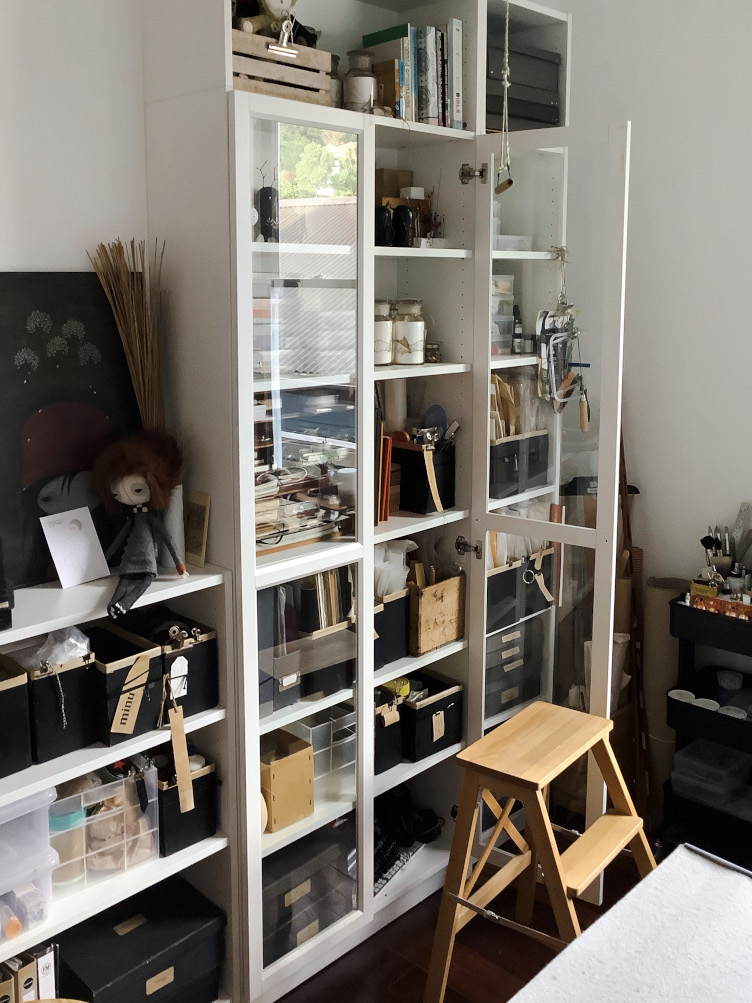


Describe your mind:
To paraphrase Bob Dylan: I’m a woman of contradictions, I’m a woman of many moods. I contain multitudes.
What are you currently listening to?
I am afraid I will show my age, but I recently rediscovered a love for Bob Dylan, Johnny Cash, and Neil Young.
What’s your favourite childhood book and why?
Post für den Tiger, by Janosh. The stories and illustrations of the bear and the tiger living together in a little hut by a forest reveal a deeper truth about the world at large and relationships in particular. I can’t believe that the books were never translated into English. You are missing a real treat.
What are you reading now?
Network Effect – The Murderbot Diaries #5, by Martha Wells. Love it.
Who is your hero/heroine? Why?
Tove Jansson. Her Moomin stories mirror the human condition, and her life, often restricted by the moral framework and the expectations of her time, is an inspiring tale of love, authenticity, and resilience.
A favourite quote
“Just think, never to be glad or disappointed. Never to like anyone and get cross at him and forgive him. Never to sleep or feel cold, never to make a mistake and have a stomach-ache and be cured from it, never to have a birthday party, drink beer, and have a bad conscience… How terrible.” – Moominpappa, from the book Tales from Moominvalley, by Tove Jansson.
If you were a crafty superhero, what would your name and superpower be?
The grey lady of utter chaos and the art of getting away with it.

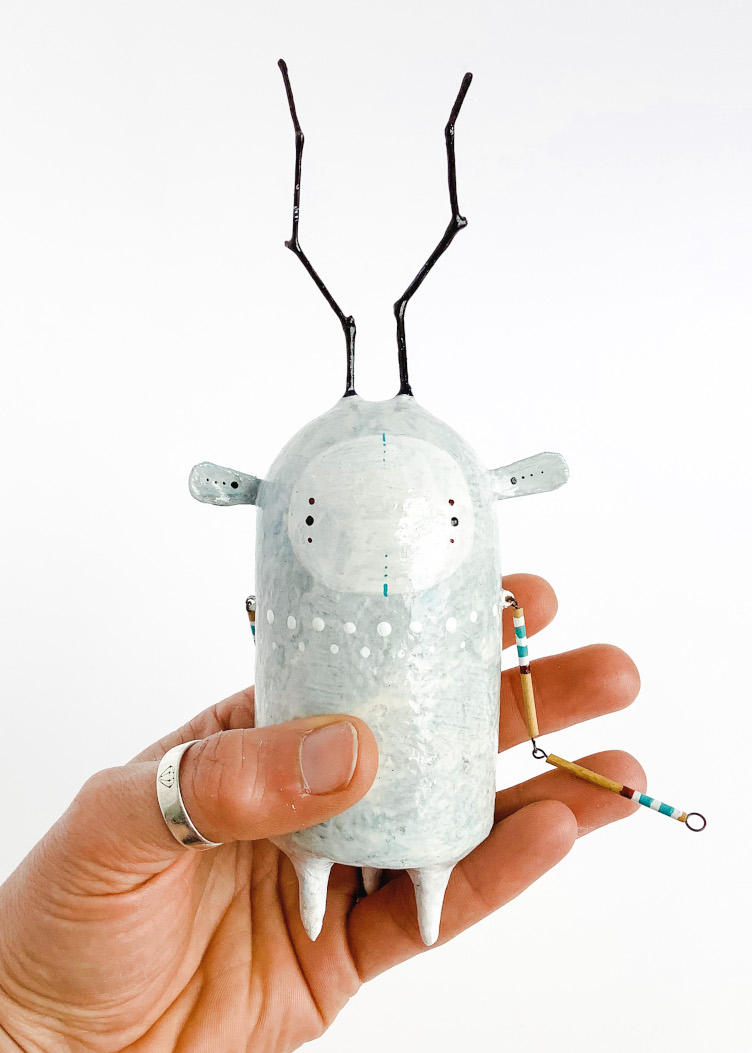
What would your advice be for those starting out in a crafty business?
The one advice I was never able to follow: Do one thing and do it really well.
Why do you think it’s important to buy handmade and/or locally made goods?
Buying handmade or locally made goods will not save the planet, but we need to find a way out of the mindless consumer culture we have slipped into, and considering where and how a product you want to buy is made is a part of this journey.
What does it mean to you when someone buys your creations?
It’s always an honour when someone buys my work for their own home or to treat a friend – it’s a wonderful thought that someone other than you feels a connection to something you made.
What was the last handmade item you bought, and what attracted you to it?
A silver pendant as a gift for a friend. She lives in a rural area in the UK, and I managed to find a jeweller in the closest town whose style I knew she would love!
What’s in store for the rest of 2021?
I reopened my Felt shop in October 2020 after a rather long hiatus. I am still reconnecting to my fanbase and customers, and I want to continue to grow and expand the collection of artworks available for sale.
Special offer for Felt readers!
Minu is generously offering 20% off any of the stunning sculptures and prints in her Felt shop when you enter the voucher code MEETMINU2021 at checkout. This offer is valid until 5pm, Monday 6 September 2021. Thank you so much Minu!






